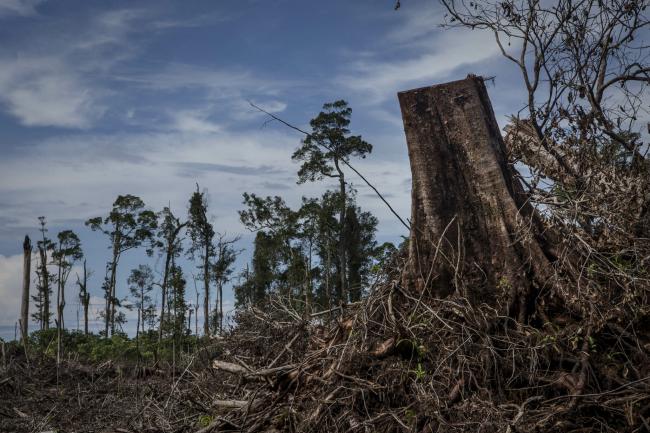Articles Menu

June 11, 2021
Slowing global warming and stemming the loss of biodiversity have been viewed as independent challenges for years.
But a new landmark report concludes that climate change and the rapid decline of natural ecosystems are intertwined crises that should be tackled together if international efforts to address either are to succeed.
The report, released Thursday, was written by 50 of the world’s leading experts on biodiversity and climate change, representing two major international scientific groups collaborating for the first time: the Intergovernmental Science Policy Platform on Ecosystem Services (IPBES) and the Intergovernmental Panel on Climate Change (IPCC). The findings emerged from a workshop held in December and months of subsequent research, and come as leaders gear up for two major upcoming United Nations conferences, one focusing on biodiversity and the other on climate change.
Until now, the authors of the report said, global collaborative efforts to address climate change, through platforms including the IPCC and the Paris climate agreement, have operated on a different track from efforts to address biodiversity, carried out through the UN Convention on Biological Diversity and other international organizations.
“For far too long we’ve tended to see climate and biodiversity as separate issues, so our policy responses have been very siloed,” said Pamela McElwee, one of the report’s authors and an associate professor in the Department of Human Ecology at Rutgers University. “Climate has simply gotten more attention.”
Some key efforts can contribute to both the preservation of biodiversity and controlling global warming, especially stopping deforestation in the tropics, but also halting the degradation of other carbon-rich ecosystems, including mangroves, peatlands, savannahs and wetlands.The authors say that ramping up sustainable agriculture and forestry, while cutting subsidies to destructive industries, will also be critical.
“We are seeing multiple impacts of climate change on all continents and in all ocean regions. These increasingly add to the enormous human pressure on biodiversity,” said Hans-Otto Pörtner, a climatologist and previous IPCC author who co-chaired the steering committee of the collaborative workshop. “So far conservation efforts have not been sufficient. Human society depends on the services that nature provides, but climate change has caused loss in natural resources, especially those that are overused.”
Pörtner also pointed out that pandemics are linked to biodiversity loss because zoonotic diseases emerge from species that thrive when biodiversity declines. “Climate change and biodiversity loss are threatening human well being as well as society. They’re closely interwoven and share common drivers through human activity,” he said. “They’re reinforcing each other.”
The authors warned that some efforts to address the climate crisis could be detrimental to biodiversity, and they urged policy makers, governments and industries to avoid solutions that could effectively backfire. These include planting monocultural, non-native trees or vast tracts of land with crops for bioenergy.
“There are a lot of things being done for climate change, especially around adaptation, and many of them can be negative for biodiversity,” said Paul Leadley, a professor of ecology with the University of Paris Sud-France. “There’s a real risk that biodiversity can die from a thousand cuts.”
Almut Arneth, one of the authors and a modeling expert at Karlsruhe Institute of Technology, said that one of those adaptive efforts, planting bioenergy crops, could eventually require a land area twice the size of India. “On the other hand, we’re using much more than 50 percent [of the world’s land] for food and timber production,” Arneth said. “So as you can imagine planting those large bioenergy crops will put enormous pressure on existing natural land, which would be catastrophic for biodiversity” and for food security.
While the report pointed to solutions, including cutting deforestation, the authors stressed that “nature based solutions” could only go so far.
“An immediate conclusion is that maintaining biodiversity and its functions relies on phasing out emissions from the burning of fossil fuels,” Pörtner said. “Nature is offering solutions, which can be helpful if done in parallel with strong emissions reductions.”
Strong policy and action—executed quickly— will be essential to staving off the twin crises, the authors said. They intend the report to provide the current state of thinking on the issue and said they hope it prods policy makers to push for conservation efforts like President Joe Biden’s plan to conserve 30 percent of American lands. The report called for a global effort to conserve up to half the world’s ocean and lands.
“Positive outcomes are expected from substantially increasing intact and effectively protected areas,” the report said. “Global estimates of exact requirements for effectively protected and conserved areas to ensure a habitable climate, self-sustaining biodiversity and a good quality of life are not yet well established but range from 30 to 50 percent of all land and surface areas.”
Pörtner added that successful implementation “depends on rapid entry into action. Overall, every bit of warming matters, and every lost species and every degraded ecosystem matters.”
The private sector, especially financial institutions, will also be critical in the effort, the authors said.
McElwee noted the recent development of the Task Force on Nature-Related Financial Disclosures, an effort to push banks to evaluate financial risk from the loss of natural systems, similar to the Task Force on Climate-Related Financial Disclosures, which defines how banks should evaluate risk from climate change.
“The goal is for the private sector to think about how the loss of biodiversity actually creates risk and build that risk into decision-making,” McElwee said. “To tackle these crises we need all hands on deck.”
[Top photo: Land clearing of peatland forest to make way for a palm oil plantation in Aceh province, Indonesia, the habitat of the Sumatran orangutan, on November 13, 2016. The orangutans in Indonesia have been on the verge of extinction as a result of deforestation and poaching. Credit: Ulet Ifansasti/Getty Images]